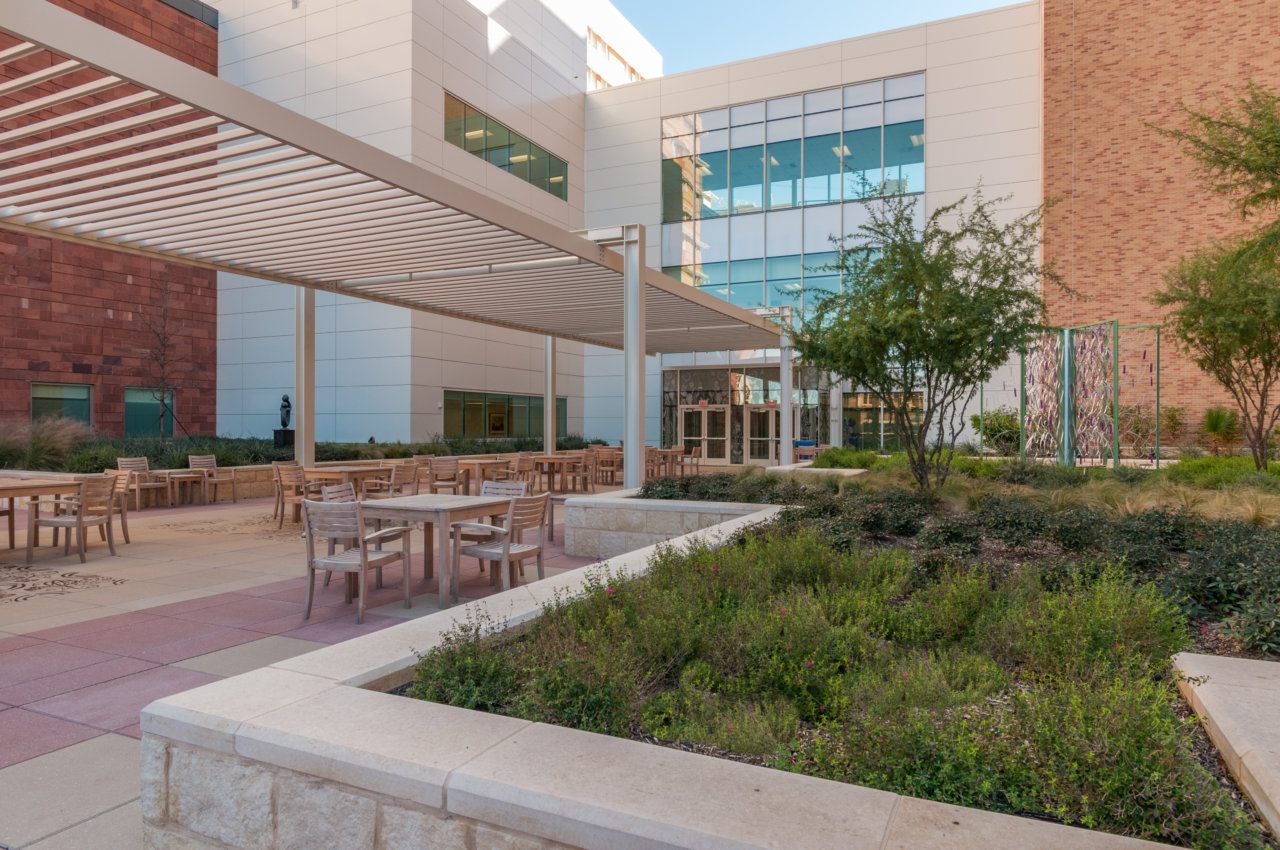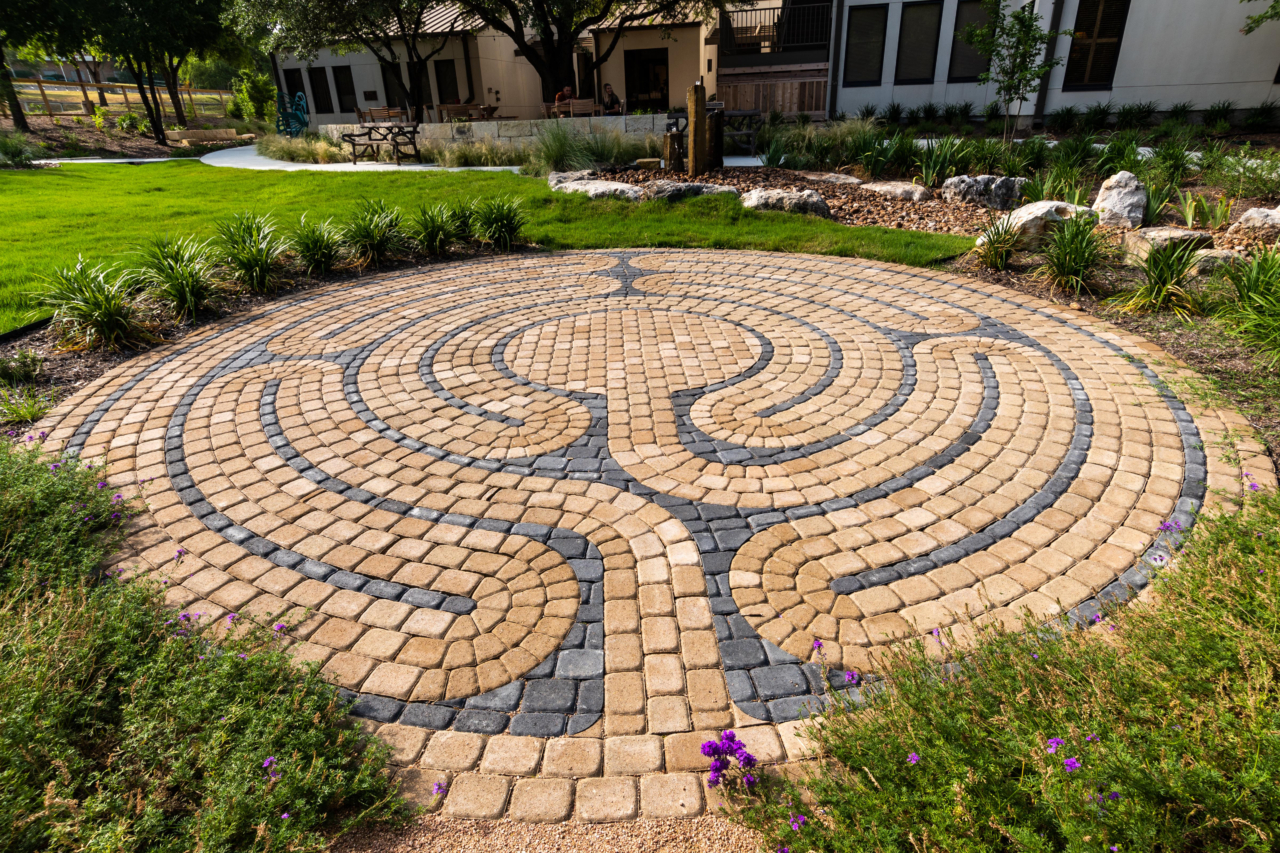EVIDENCE-BASED
DESIGN
How landscape and green space improve human health and behavior
June 8, 2022
Parks, trails, and other types of landscape designs gained much-deserved attention over the past two years. As this 2020 Boston Globe op-ed reveals, more people began to understand how essential they are for public health, something architects and landscape architects know well. We have long relied on evidence-based design to shape our landscaped spaces.
Evidence-based design uses scientific research to improve outcomes in human health, especially in healthcare and education settings. And the evidence is clear: landscaped spaces benefit human health. When designing green space, landscape architects think about many factors, like the type of space or how it connects with nearby buildings. Good evidence-based design focuses on the people who plan to use the landscape. Some solutions may help one set of users but not others. For example, veterans and medical patients/staff need different solutions to benefit from time spent in landscaped areas.
So, how can landscaped spaces help veterans and medical patients/staff? Let’s look at the evidence for nature’s health benefits and the best evidence-based design solutions for each group.
Evidence-based design: landscape’s positive impact on human behavior and health
According to Mark Epstein, PLA, of Hafs Epstein Landscape & Architecture in Seattle, at least 60 studies suggest nature has numerous positive effects. Nature can reduce loneliness by up to 28%. It can lower stress and make you happier. It can also improve the symptoms of heart disease, cancer, and attention disorders. Other benefits include:
- Lower aggression in mental health patients
- Faster healing after surgery with shorter hospital stays
- Less pain
- Increased attention
- Less anxiety
Research also looks at how unique groups benefit from time spent in nature. Landscape architects use this evidence as the framework for the solutions they develop.

Hospital gardens can reduce stress, and reducing stress leads to better health outcomes.
Landscape design for patients and staff in healthcare settings
Hospitals can offer healing gardens for staff, patients, and their families to use during breaks or difficult moments. Reducing stress drives the design of these spaces, as less stress leads to better overall physical and mental health outcomes.
The type of patient dictates the design solutions, but Epstein says effective healing garden designs share several traits.
These gardens should offer elements that represent life (trees, plants, and flowers) and stimulate the senses, such as the sound of birds and water, the feel of sunlight and breezes, and the fragrance of herbs and flowers. In fact, they provide a welcome contrast to the equipment and smells of medical spaces. Private space is essential. Gardens are often the backdrop for tough conversations and processing difficult emotions.
It’s also critical to integrate gardens with the building they support. Gardens should be easy to find and easy to access from anywhere in the hospital, whether from patient rooms or nurse stations. They should avoid things that stir up negative emotions, such as benches that look like tombstones or sculpture that looks like a medical device.

Labyrinths are a key evidence-based design feature for healing gardens. Research shows they can lead to self-reflection and connections with nature.
Landscape design for veterans and their families
Memorial parks and therapeutic gardens can give veterans a calm, tranquil place to feel relaxed and find a sense of community. These spaces should promote comfort and relaxation through:
- ADA-accessible features
- Reflective elements (shiny surfaces or calm water)
- Positive artwork
- Flowing water
- Aromatic plants
- Areas for service animals
- Shade for protection from the heat and less strain on the eyes
Labyrinths can serve as a place to reflect and discover meaning. Likewise, spaces for activities like gardening can assist with relaxation. According to the Department of Veteran Affairs, one study found PTSD patients in a gardening therapy program had lower levels of stress hormones.
Other features, such as physical therapy gardens and memory support gardens (spaces with familiar objects to stimulate memory), can also benefit veterans.
Of course, designers should plan these spaces with the types of veterans they intend to serve. For example, lush trees and plants can decrease visibility and remind Vietnam War veterans of the jungle settings where they fought. The sound of a breeze between trees can also trigger wartime memories. Open green spaces with lawns could benefit Vietnam veterans for this reason.
On the other hand, open spaces with rock gardens could remind Gulf War veterans of the Middle East, which can raise their stress levels.
Gardens, parks, and other green spaces benefit all of us, but they are crucial for those who need relief from stress, pain, or other mental/physical health issues. Following design practices based on scientific research will maximize that benefit and positively impact the health and wellness of those who use these spaces.

About the Author
Kimberley Wolf, PLA, ASLA, LEED AP
Kim leads RVK’s landscape architecture studio and has a passion for evidence-based design, tree preservation, and water conservation. She helps clients discover the beauty of design and native landscapes.
